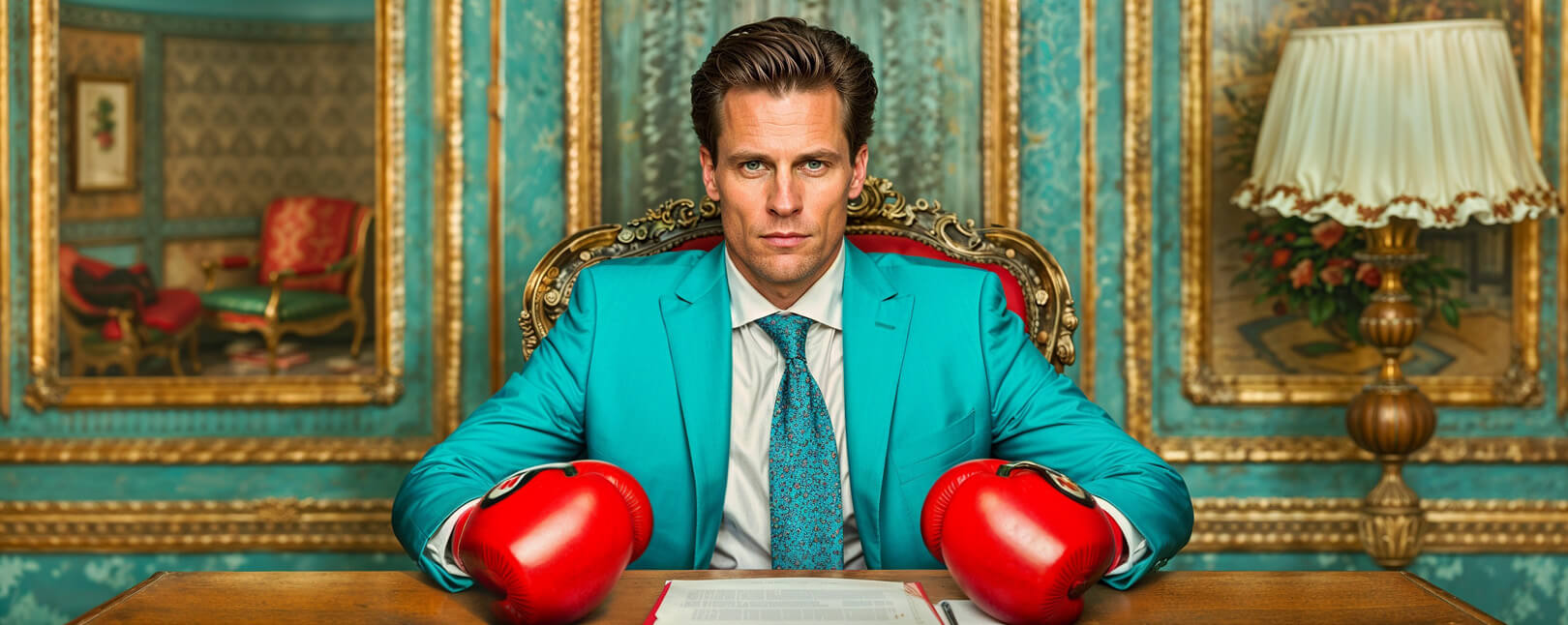When Does a Dispute Become a Chargeback? What’s the Difference & How Do You Prevent Both?
Transaction disputes are an increasingly-common obstacle for merchants working in remote channels like eCommerce. These disputes serve an important function in the payments ecosystem.
However, more and more customers are abusing disputes to claw back funds without a valid reason to do so. What does this process entail, and how are you meant to respond as a merchant? Most importantly, what can you do to stop disputes and recover revenue?
Recommended reading
- Can You Dispute Apple Cash Transactions?
- 3 Types of Payment Reversals: What’s the Difference?
- The Bank Dispute Process: A Step-by-Step Guide
- Chargeback Disputes: The Basics of How Chargebacks Work
- Key Tips for Better Credit Card Dispute Resolution in 2024
- Customer Complaints: Why They Happen & How to Prevent Them
What is a Transaction Dispute?
- Transaction Dispute
A transaction dispute occurs when a credit cardholder registers a formal complaint against a merchant regarding a specific transaction. Most transaction disputes are the result of claims of fraud or unauthorized purchases, although one may be filed if the item never arrived, services weren’t performed, or the item arrived damaged, etc.
[noun]/* /tran • zak • SH(ə)n • di • spyo͞ot/
Transaction disputes are a consumer right protected by law. They were implemented back in the early days of the credit card industry as a way to ensure consumer confidence.
That said, every time a transaction is disputed, you lose the revenue you earned from the original sale. You also pay additional fees, and lose out on the time associated with the dispute process. You may also face additional costs and fees if you decide to challenge the dispute.
With that in mind, let’s take a closer look at the transaction dispute process to discover what you can do to mitigate those losses.
What Complaints Qualify for a Dispute?
There are literally dozens of reason codes that might be attached to a dispute if it progresses to the chargeback stage. That said, the circumstances under which a cardholder can dispute a charge generally fall into one of three categories:
Fraudulent or Unauthorized Charges
This occurs when a cardholder does not recognize a transaction or did not approve the transaction in question. In other words, the transaction was conducted by a criminal using stolen information. Common signs of fraud may include:
- Transactions for which the shipping information doesn’t match the cardholder’s address.
- Items the buyer never ordered, but which were added to their invoice later.
- Multiple, identical items purchased in quick succession.
Billing Errors
The cardholder is charged for goods or services outside of — and apart from — agreed upon times and methods. Billing errors can account for charges that:
- Display the wrong date or amount
- Contain mathematical or accounting errors
- Do not list post-purchase credits or returns
- Do not reflect an established change of address
Dissatisfactory Service
These are any goods or services that did not arrive as expected, or which didn’t live up to the promises made at the time of purchase. Some examples include:
- Damaged or faulty goods
- Failure to abide by codes and regulations
- Missing items
- Abuse of terms of service
If any of the above criteria are met, the cardholder may submit their claim to their bank for further review.
Transaction Disputes vs. Chargebacks
Before we dig into the transaction dispute process, we should distinguish between a chargeback and a dispute. Most chargebacks begin with a customer dispute, but not all disputes will inevitably lead to a chargeback.
A customer can initiate a transaction dispute by contacting the issuer (the bank associated with the payment card used in the transaction). The cardholder will ask the bank to reverse the charge; the bank examines the circumstances and determines if there is a legitimate reason to do so. If the bank accepts the customer’s claim, then the dispute progresses to a chargeback.
Ultimately, chargebacks do have a legitimate and important role in the payments industry. After all, if you know you’re able to recover the money you lose to unauthorized use, criminal fraud, or merchant abuse, then you’re going to have much more confidence in the concept of the payment card.
So, now that we understand chargebacks are more of a final stage in the transaction dispute process, let’s go over the particulars.
A Brief Summary of the Dispute Process
First, let’s get this point clear up front: the dispute process is very complicated. We have written dozens of articles about it, drilling down in very minute detail. So, without straying too far into the weeds to parse out the details, let’s boil the process down to its most basic steps:
Generally speaking, the goal to complete the dispute process is 30 days or less for Visa and 45 days for Mastercard. Depending on how far the dispute progresses, though, it could take months to resolve.
Will a Dispute Let the Cardholder Get Their Money Back?
Possibly. The answer depends on a couple of factors.
When a cardholder disputes a transaction, and the bank accepts the cardholder’s claim, the cardholder is generally granted a provisional refund from their issuing bank. The issuer will then reach out to your acquiring bank to recover the funds.
However, if you decides to fight back against the cardholder’s dispute through the representment process, this could change. If you are able to provide compelling evidence that the cardholder’s claim is erroneous or illegitimate, the bank may return the funds back to you (minus the nonrefundable chargeback fee assessed by your acquirer).
Even then, the cardholder or the bank may dispute the transaction a second time in some cases. This situation is known as an arbitration chargeback (or “pre-arb,” depending on the card brand). The only step available after this is to pursue the issue through arbitration. This should only be a last resort, though.
Can Banks Reject a Cardholder’s Dispute Claim?
Short answer: Yes.
Banks and card networks can deny any transactions they feel are erroneous or potentially fraudulent. They can also file disputes on their customer’s behalf if the transaction raises any red flags on their end. If a bank files a dispute or chargeback on their customer’s behalf, odds are the cardholder won’t even be aware that it happened until the funds show up in their bank account.
Some other factors that could cause a bank to reject a dispute include:
1 | The Credit Card Used
Every card network has different rules regarding disputes, and each requires different things. So, a customer dispute claim may be acceptable for one brand, but not another.
For example, one card brand may have stricter requirements for chargebacks centered around a specific claim. One may require more evidence that the consumer has attempted to contact you for a refund before a dispute can be approved.
2 | The Dispute Reason
Regardless of the card network, if the reasons don’t match any of those listed above (item not as described, never arrived, arrived damaged, was the wrong item, etc), or those reasons can’t be proven… the bank may reject a dispute outright.
All of the following would be considered invalid grounds for a chargeback:
- The buyer failed to contact the merchant for a refund first.
- The buyer didn’t like the item purchased.
- The buyer didn’t understand the shop’s return policy.
- The transaction was initiated by a household or family member.
- The buyer forgot a subscription payment was due.
- The buyer wanted something for free.
3 | The Item Was Purchased Overseas
Consumer protections don’t always cross borders. In many cases, the bank’s ability to issue a chargeback may be limited by the country or region in which the transaction took place.
4 | The Cardholder's Claim Seems Suspicious
If a dispute raises any red flags for fraud, the dispute may be denied. The reasons for this are manifold, but essentially, if the person reviewing the dispute request on the bank or card network’s end finds it questionable, it will be denied.
Friendly Fraud Complicates Transaction Disputes
Banks and card networks won’t always catch illegitimate disputes. Transaction disputes will sometimes bypass defenses, regardless of any safeguards. Sometimes this is deliberate abuse, while it may be an honest mistake in other cases.
First-party fraud cost merchants an estimated $48 billion in 2021. This is a serious issue that adversely affects everyone involved in the transaction process, from the card networks to the average consumer.
Friendly fraud is hard to detect because it isn’t typically committed by dedicated criminals. In most cases, it’s committed by otherwise legitimate customers. These cardholders may not even realize they’re doing anything wrong, making it extremely hard to diagnose and amicably resolve.
Unfortunately, there aren’t easy, “one-size-fits-all” solutions to these problems, either. Banks and card networks have been hard at work trying to help mitigate this growing issue by increasing their consumer dispute requirements. Still, there is only one method that has shown any progres: transaction dispute prevention.
How to Prevent Transaction Disputes
The chargeback process has not kept pace with developments in technology. We’re using a system designed for a pre-internet age. The result is that customers feel free — or even encouraged — to file disputes without ever coming face-to-face with the negative effects of their actions:
- The increased volume of cases makes it difficult for banks to complete the necessary due diligence for each customer dispute.
- If there is any legitimacy at all to a customer’s complaint, the case will likely go to the cardholder. Banks are understandably reluctant to jeopardize customers’ trust.
- Merchants often don’t fight invalid customer disputes. They write them off as an unavoidable cost of doing business instead.
- Misinformed customers erroneously equate the chargeback process with a refund, unaware that they’re entirely different.
- Customers who successfully file a dispute are more likely to repeat the behavior.
The best strategy is to adopt a chargeback mitigation plan that includes both 1) best practices for criminal fraud prevention and 2) tactics to eliminate errors. Once you’ve weeded out these threats, all remaining chargebacks should be cases of friendly fraud, which you can engage through tactical representment.
There’s no quick or easy solution for preventing transaction disputes. With the right strategies in place, though, you can protect your business and your bottom line.
FAQs
What is a transaction dispute?
A transaction dispute occurs when a credit cardholder registers a formal complaint against a merchant regarding a specific transaction. Most transaction disputes are the result of claims of fraud or unauthorized purchases, although one may be filed if the item never arrived, services weren’t performed, or the item arrived damaged, etc.
What complaints qualify for a dispute?
The circumstances in which cardholders can dispute a charge generally fall into one of three categories: fraudulent or unauthorized charges, billing errors, or unsatisfactory service.
What is the difference between a transaction dispute and a chargeback?
Most chargebacks begin with a dispute; that said, not all disputes will inevitably lead to a chargeback.
A customer can initiate a transaction dispute by contacting the issuer (the bank associated with the payment card used in the transaction). The cardholder will ask the bank to reverse the charge. The bank examines the circumstances and determines if there is a legitimate reason to do so. Then, if the bank accepts the customer’s claim, the dispute progresses to a chargeback.
What are the steps in the transaction dispute process?
You can reduce the process down to three basic steps. First, the cardholder files a dispute. The issuer reviews the case, and then either files a chargeback, rejects the claim.















